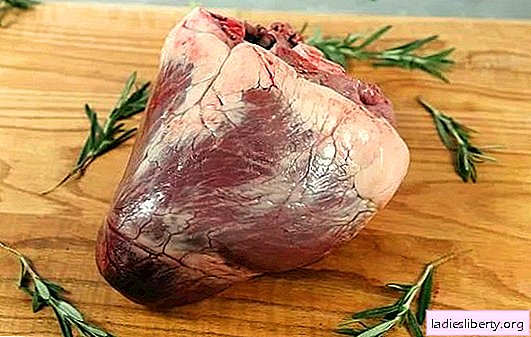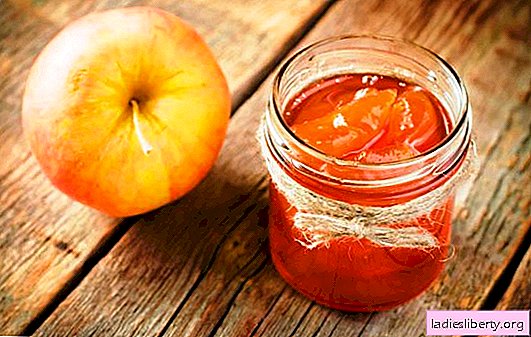
Beef heart is an offal that belongs to the first category and is widely used in cooking. It can be used by adults and children, pregnant women and the elderly.
This product has excellent taste and is used in boiled, fried and baked form. But it must be borne in mind that a beef heart provides invaluable benefits to the human body, provided that it is properly processed and moderate in consumption.
What nutrients are found in beef heart?
The beef heart is not only not inferior in usefulness to meat, but also in a sense surpasses it with these qualities. This is due to the high content in the product of the following trace elements necessary to ensure the normal functioning of the body:
• vitamins of groups A and B;
• biotin;
• ascorbic acid;
• niacin equivalents;
• calcium and potassium;
• magnesium and sodium;
• sulfur and phosphorus;
• manganese and iodine;
• zinc and copper;
• cobalt and molybdenum;
• chromium and selenium.
Due to its rich biochemical composition, beef heart is often included in nutrition programs for people involved in sports. And also the product is an integral part of the diet with a weakened body and during recovery periods after illness.
Nutritional value and calorie content of the product
Beef heart is characterized by low calorie content. 100 g of product contains only 96 kcal. Eating this dish allows you to get:
• up to 35% of proteins;
• from 6 to 7% fat;
• up to 1% carbohydrates.
The calculations are given in relation to the daily requirement of the body for the listed elements.
Since beef heart is high in protein, the product should be combined with others to avoid oversaturation with this component.
Beef heart: the benefits of the product for the human body
Due to the content of a large number of various nutrients, with proper use and preparation, beef heart brings such benefits to the body:
• saturates cells and tissues with necessary microelements, and restores protective functions;
• compensates for the shortage of a number of amino acids that the human body is unable to produce, and can only receive from animal food;
• stimulates the processes of transporting nutrients to organs and tissues;
• promotes easy absorption of proteins;
• compensates for the deficiency of iron in the body, which helps to increase the level of hemoglobin and avoid anemia and oxygen starvation;
• restores the biological balance of minerals in the body;
• beneficial effect on blood composition;
• normalizes heart function;
• removes "bad" cholesterol from the body and improves the state of blood vessels, which helps to normalize blood pressure;
• has a beneficial effect on the central nervous system;
• makes it easy to get rid of extra pounds due to the low calorie content and high content of vitamins and minerals;
• strengthens bone and cartilage;
• improves sexual function in men and promotes sperm motility;
• stimulates the growth of muscle mass during active sports;
• helps the full growth and normal development of the organs and systems of the child.
In addition, a beef heart will be of great benefit to a pregnant woman and a growing fetus. The active components of this product will help increase the future mother's body's resistance to diseases and protect against viruses and infections, and are necessary for normal intrauterine development of the baby.
Beef heart: possible harm
A beef heart will not harm the human body if consumed in moderation. In cases where this tasty and healthy dish is present in the diet too often, it threatens with such negative consequences:
• violation of metabolic processes;
• oversaturation of the body with protein, which can lead to deterioration of bone tissue;
• increased fragility of capillaries;
• excess cholesterol in the blood;
• irregular blood pressure;
• problems in the work of the cardiovascular and digestive systems;
• the appearance of osteochondrosis and radiculitis.
With special precaution, you should consume the offal in the presence of problems in the functioning of the digestive tract, as this can lead to a deterioration of the condition.
How to choose a beef heart
You can benefit from eating a beef heart only if it is fresh and of high quality. How to choose a product suitable for preparing various dishes? First of all, it is recommended to give preference to a chilled heart than a frozen one, this will allow you to better study the proposed product.
It is no secret that the quality of meat directly depends on the age of the animal. Before making a purchase, you need to pay attention to a number of nuances:
- The size and weight of the product. On average, heart weight ranges from 1.5 to 2 kg. In the case when the organ is too large and massive, this suggests that the animal at the time of the slaughter was quite adult or even old.
- The color of the organ. As a rule, a quality product has a reddish-brown hue, saturated, but not too dark.
- The smell of the product. Beef heart should have a light, slightly sweet aroma inherent in fresh meat. In cases where the product smells very “slaughter”, it is advisable to question its freshness.
- The amount and color of fat. The heart of a young animal is moderately covered with fatty layers that have a yellowish tint. In cases where there is too much fat and its color is more saturated, this also indicates the old age of the individual.
- Product structure. The beef heart, suitable for consumption, should have a uniform surface without spots, plaque and damage.
- Reaction to mechanical stress. A high-quality product has a high density and, after pressing, quickly restores its original shape.
- Packing. It is better not to purchase wrapped products. This prevents air from entering and often causes the meat to “choke”.
These simple recommendations will allow you to choose a high-quality and healthy product from which you can prepare various options for dishes.
Product Handling and Storage Rules
Before cooking any dish using beef heart, you must properly process the product. To do this, you need to do the following:
1. Remove fat from the inside of the body.
2. Remove blood clots and blood vessels.
3. Thoroughly flush the heart with plenty of cool running water.
4. Cut the product into large pieces and soak in cold water for several hours.
5. When soaking, change the water several times.
6. Boil the heart for 1.5-2 hours, remembering to regularly remove the foam.
7. During cooking, change the water every half hour.
By purchasing a heart in frozen form, it can be stored in the freezer for up to 1 year. Chilled offal should immediately be placed in the refrigerator for no more than 2 days.
Beef heart is an inexpensive and healthy product that can be used both as a main dish and included in various culinary masterpieces.











